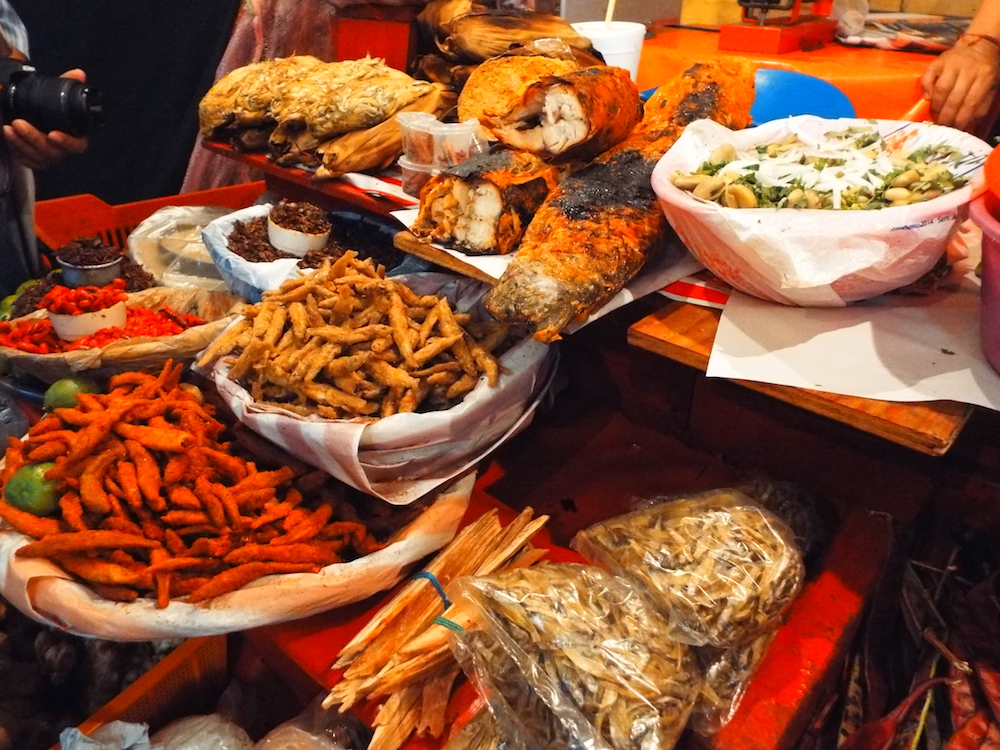There aren’t many places left in the world where you can stop on the street and snack on something made in almost the exact same way as it was 500 years ago. Mexico happens to be one of those places. While certain items have become so ubiquitous it seems Mexican cuisine couldn’t exist without them – pork, garlic, lard, citrus fruit – the staples of the pre-Hispanic diet still remain a very real part of everyday eating south of the border. Let’s dive back and get a pre-Hispanic food primer.
First, a look of what used to be Mexico’s ancient diet. Bubbling not too far below Mexico City’s asphalt jungle is an ancient system of lakes and rivers, atop which Aztecs developed one of the world’s most efficient agricultural systems, the chinampas, floating fields that produced the empire’s basic staples: corn, beans, chiles, and amaranth. For protein, ancient peoples turned to wild game and small mammals (armadillos, deer, buffalo, iguanas, ocellated turkeys, boars, and wild foul) before the Spanish brought pigs, cows, and chickens.
In the central region, indigenous peoples incorporated various cacti into their diet, while along the coasts, seafood, fish, amd salt were extremely important for survival and trade. And in the Valley of Mexico, lake fish, algae, freshwater shrimp, ducks, sand smelt (charales), and seasonal insects were all mainstays. Rounding out the diet were basic elements that can be traced back to almost every region (and still found today): corn, squash, chiles, tomatoes, and beans. [pagebreak]
Don’t think that you can’t still get a taste of the past in the cosmopolitan monster. This is how the ancient foods look today: tamales and atole were both important parts of pre-Hispanic cuisine and while most tamales are now made with pork lard, nothing much else about them has changed in the last 500 years.
Most large local markets have vendors selling crispy, fried charales, roasted esquites with epazote and chile, amaranth bars (alegrías) held together with honey, and sliced, slimy nopal cactus sprinkled with cilantro and onion. In the Mercado Merced, the city’s second largest bulk market, vendors sell ant eggs (escamoles) and frog tamales. In the Mercado Jamaica, wild mushroom sellers hawk hunted fungi from nearby Mexico State.
At the heart of Mexico, you can also find a variety of regional delicacies: roasted crickets from Oaxaca (served at any decent mezcal bar), the Chocolata clams of Baja California in the San Juan Market and dried jerky or machaca (traditionally made from wild game, now most often from beef) from the country’s semi-arid northern regions.
And it doesn’t stop at street eating – just look at Pujol’s baby corn and ground chicatan ant appetizer or Azul Historico’s deer (venado) salpicon. In addition, the city’s top chefs are now once again sourcing from the nearby chinampas for much of their produce. On your next trip to Mexico make sure you hunt down a taste of some of these ancient delights.


![Making Mealtime Matter with La Familia: Easy Sofrito [Video]](https://thelatinkitchen.com/wp-content/uploads/2015/10/sofrito-shutterstock__0-500x383.jpg)
![Easy Latin Smoothies: Goji Berry Smoothie [Video]](https://thelatinkitchen.com/wp-content/uploads/2015/12/goji_berry-shutterstock_-500x383.jpg)
















![Fun and Fast Recipes: Fiesta Cabbage Salad [Video]](https://thelatinkitchen.com/wp-content/uploads/2015/11/fiesta_cabbage_slaw-shutterstock_-500x383.jpg)









